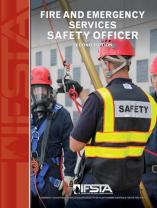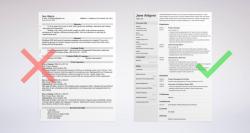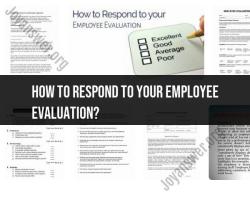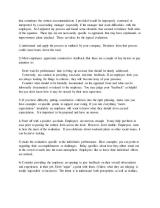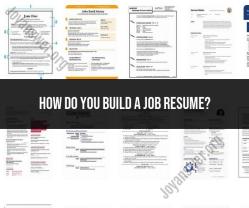How to write overall performance review comments?
Writing effective overall performance review comments requires a balanced approach that acknowledges achievements, highlights areas for improvement, and sets the stage for future growth. Here are some tips for crafting meaningful and constructive performance review comments:
Start with Positive Feedback:
- Begin the review with positive comments that acknowledge the employee's strengths and accomplishments. Highlight specific achievements and contributions that demonstrate the employee's value to the team and organization.
Be Specific and Provide Examples:
- Use specific examples to support your comments. Instead of vague statements, provide concrete instances where the employee excelled or made a significant impact. Specificity adds credibility to your feedback.
Acknowledge Areas for Improvement:
- Address areas where improvement is needed but do so in a constructive and supportive manner. Be specific about the behaviors or skills that could be enhanced and provide suggestions for development.
Use the "Sandwich" Method:
- Sandwich constructive feedback between positive comments. This "sandwich" approach helps maintain a balance in your message, ensuring that the employee receives both recognition for their strengths and guidance for improvement.
Focus on Behavior and Results:
- When offering feedback, concentrate on observable behaviors and measurable results. Discuss how the employee's actions contributed to team goals or affected overall performance. This provides clarity and helps the employee understand the impact of their work.
Use Clear and Positive Language:
- Use clear and positive language to convey your message. Avoid overly technical jargon and ensure that your comments are easily understood. Frame feedback in a way that encourages growth rather than creating a sense of failure.
Be Honest and Fair:
- Be honest in your assessment. If there are challenges or areas that need improvement, address them directly. However, ensure that your feedback is fair and not influenced by personal biases.
Encourage Employee Development:
- Discuss opportunities for professional development and growth. Clearly communicate how the employee can enhance their skills, take on new responsibilities, or participate in training programs to further their career.
Set SMART Goals:
- Collaboratively set Specific, Measurable, Achievable, Relevant, and Time-bound (SMART) goals for the upcoming performance period. Clearly outline expectations and discuss the steps needed to achieve those goals.
Close on a Positive Note:
- End the performance review on a positive note. Reiterate your confidence in the employee's abilities and express appreciation for their contributions. This leaves the employee motivated and optimistic about their future performance.
Offer Support and Guidance:
- If applicable, offer your support in overcoming challenges and provide guidance on how the employee can improve. Emphasize that the performance review is a tool for growth and development.
Be Open to Dialogue:
- Encourage a two-way conversation. Invite the employee to share their perspectives, concerns, and goals. A collaborative approach fosters open communication and ensures that both parties have a shared understanding of expectations.
Remember that effective performance reviews are ongoing conversations, not just annual events. Regular feedback and communication throughout the year contribute to a more constructive and supportive overall review process.
Crafting a comprehensive picture: How to write overall performance review comments?
Overall performance review comments should be comprehensive, providing a holistic overview of the employee's performance over the review period. This includes considering their key achievements, areas for improvement, and alignment with organizational objectives.
Here are some tips for crafting comprehensive overall performance review comments:
- Start by identifying the employee's key achievements. What have they accomplished that is noteworthy? What impact have they made on the team and the organization? Be specific and provide examples.
- Next, consider the employee's areas for improvement. Are there any areas where they could perform better? Be honest and constructive, but also be specific and actionable. Provide suggestions for how the employee can improve their performance.
- Finally, assess the employee's alignment with organizational objectives. How well does their performance contribute to the team's and the organization's goals? Are they meeting or exceeding expectations?
Summarizing success: Condensing key achievements into impactful performance review comments
When summarizing the employee's key achievements in their overall performance review comments, focus on the most significant and impactful results. Be specific and provide examples.
Here are some tips for summarizing success in performance review comments:
- Use strong action verbs and specific language to describe the employee's accomplishments. For example, instead of saying "the employee contributed to the team's success," say "the employee developed and implemented a new marketing strategy that resulted in a 20% increase in sales."
- Quantify the employee's impact whenever possible. This will help to demonstrate the value of their contributions to the team and the organization. For example, instead of saying "the employee improved customer satisfaction," say "the employee implemented a new customer service training program that resulted in a 10% increase in customer satisfaction scores."
- Highlight the employee's unique skills and talents. How did their individual contributions help the team and the organization to succeed?
Areas for improvement: Constructive and actionable comments for overall growth
When providing feedback on areas for improvement in the employee's overall performance review comments, be honest and constructive. Focus on specific behaviors or actions that the employee can change, and provide suggestions for how they can improve.
Here are some tips for providing constructive feedback in performance review comments:
- Avoid using general statements or vague language. Instead of saying "the employee needs to improve their communication skills," say "the employee could improve their communication skills by being more clear and concise in their emails and presentations."
- Be specific and provide examples. For example, instead of saying "the employee needs to be more organized," say "the employee could improve their organization by using a project management tool and setting deadlines for themselves."
- Focus on the future and on what the employee can do to improve. Avoid dwelling on past mistakes or failures. Instead, focus on providing the employee with the tools and resources they need to succeed in the future.
Goal alignment: Connecting overall performance comments to organizational objectives
When writing overall performance review comments, it is important to connect the employee's performance to the team's and the organization's goals. This will help to demonstrate the value of the employee's contributions and how they are helping to achieve the organization's objectives.
Here are some tips for connecting overall performance comments to organizational objectives:
- Start by understanding the team's and the organization's goals. What are they trying to achieve? How does the employee's role contribute to these goals?
- In your overall performance review comments, highlight how the employee's performance is helping to achieve the team's and the organization's goals. Be specific and provide examples.
- Quantify the employee's impact on the team's and the organization's goals whenever possible. This will help to demonstrate the value of their contributions.
5. Reviewing the journey: Reflecting on progress and future potential in overall performance review comments
Overall performance review comments should also reflect on the employee's progress and future potential. This is an opportunity to provide the employee with feedback on how they have grown and developed over the review period, and to identify areas where they can continue to grow and improve.
Here are some tips for reflecting on progress and future potential in performance review comments:
- Start by acknowledging the employee's progress. What have they accomplished over the review period? How have they grown and developed?
- Identify areas where the employee can continue to grow and improve. Be specific and actionable. Provide the employee with suggestions for how they can continue to develop their skills and knowledge.
- **Express




